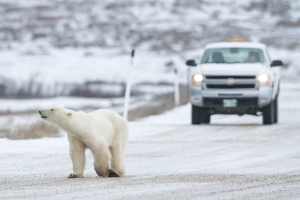Conservation group Pacific Wild is teaming up with Sitka, an outdoor lifestyle company, to raise $60,000 to help add to its hydrophone network in what is becoming known as the Great Bear Sea, an area off the central coast of British Columbia.
Sitka launched a crowdfunding campaign on Indiegogo in April to help raise money for the underwater microphone network and other projects.
“Protecting the acoustic environment in our oceans should be front and centre in our marine conservations,” says Ian McAllister, Pacific Wild’s executive director. “You can protect all the habitat that certain species require, and you can ensure a food source for them, but if these species can’t communicate, then they can’t forage, reproduce or survive. It’s no different than expecting a human to try and live a healthy life in a rock concert.”
Marine wildlife such as whales and dolphins make their home in the region, which currently has very little human-related noise pollution. Pacific Wild, however, says proposed liquefied natural gas and oil projects proposed for the area could result in as many as 3,000 tanker ship trips annually through these waters — a development that could pose a threat to these species.
Pacific Wild aims to install two more hydrophones to its network of six this year — one near Hecate Strait and one near Milbanke Sound — to help determine a baseline measurement of what the water sounds like before a possible increase in tanker traffic. The organization has already gathered about 75,000 hours of recordings from across the network. Pacific Wild will use the data to present a case to preserve parts of the region as marine acoustic sanctuaries.
“We’re beginning to get an understanding of these diversity hotspots that are largely based on 365 days a year of acoustic recording,” says McAllister.






